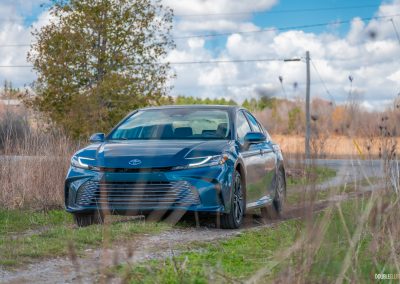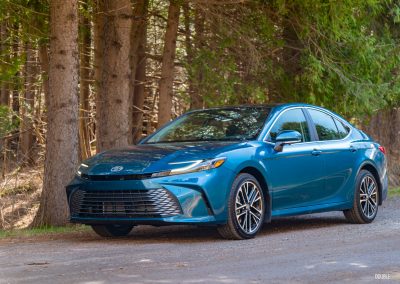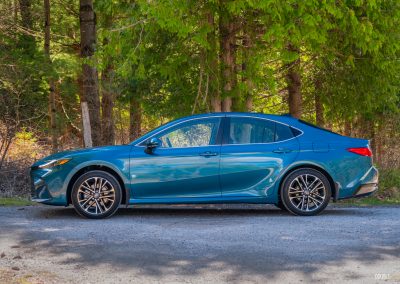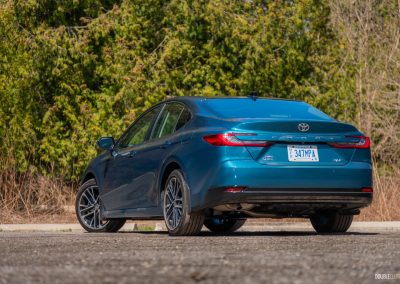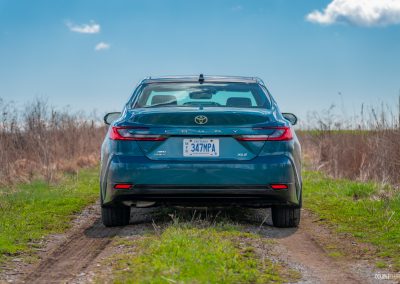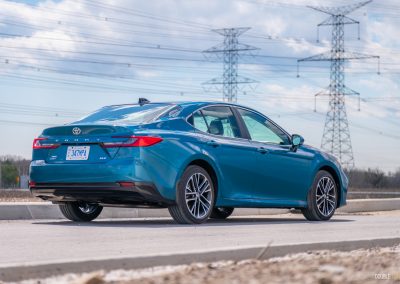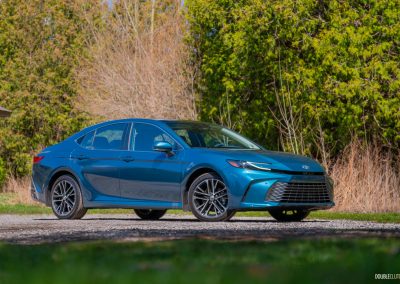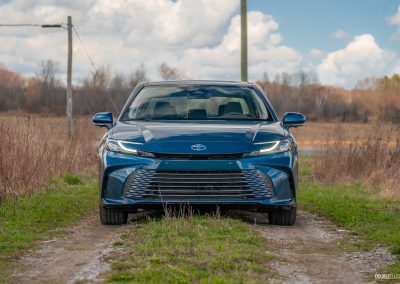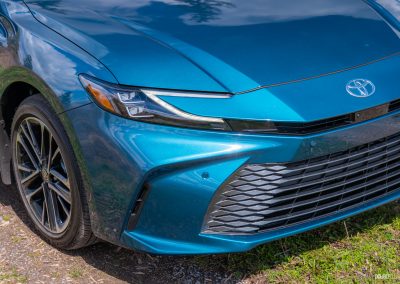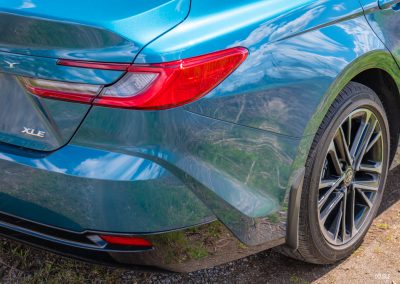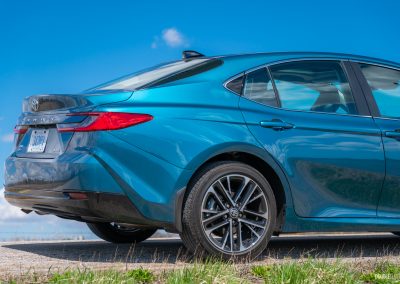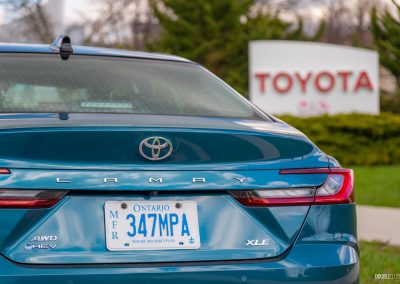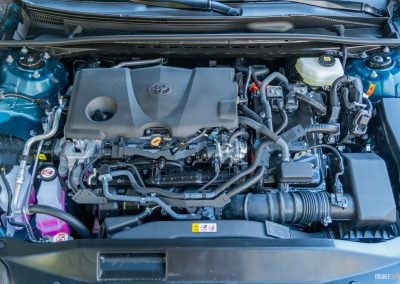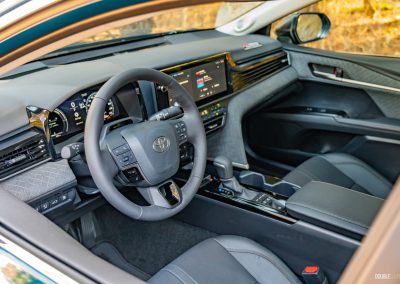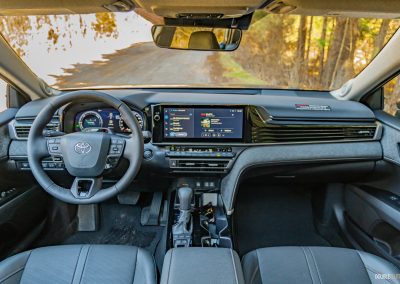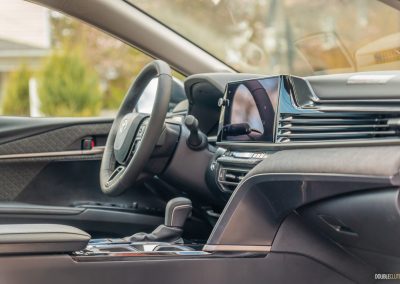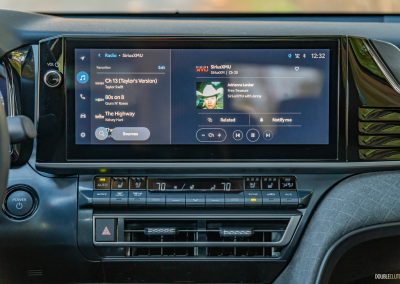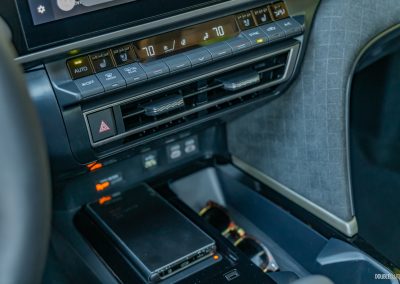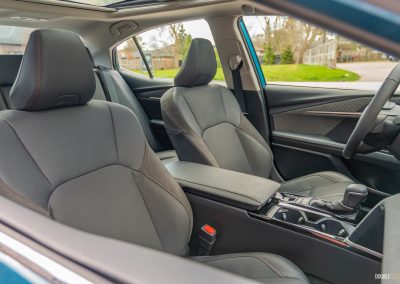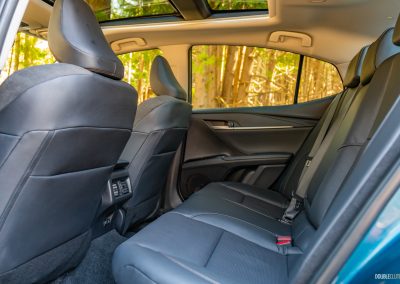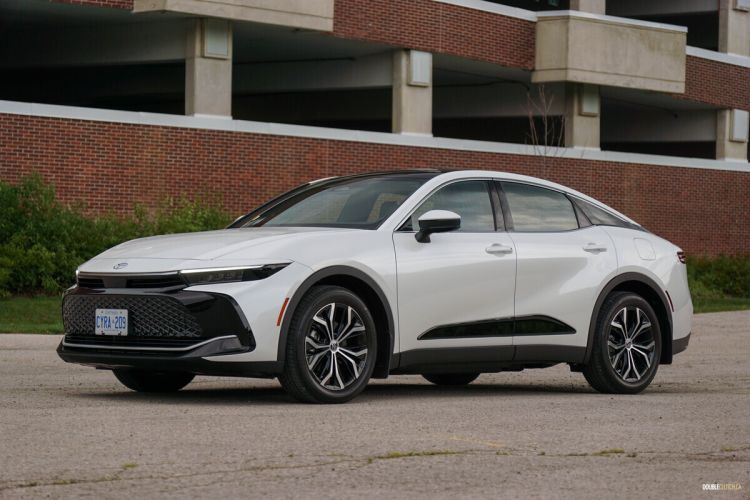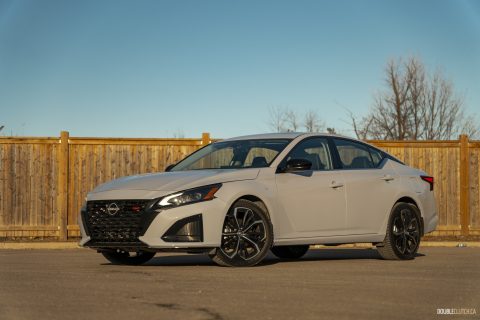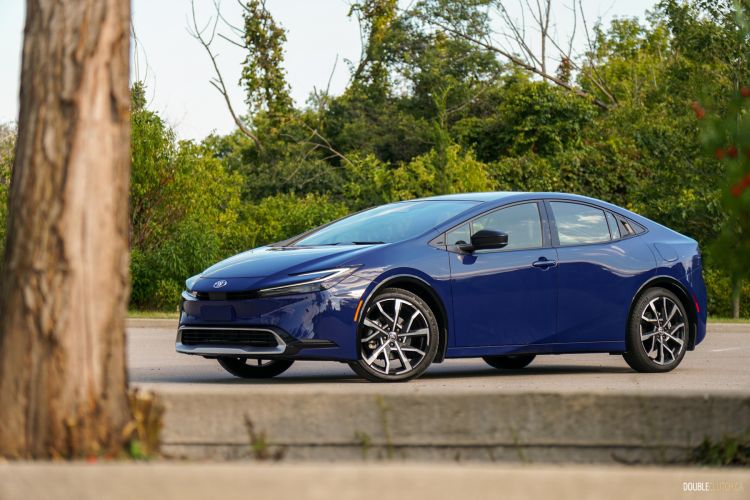There are lots of people — I often have to remind myself; most people — who don’t care in the slightest if their car is interesting, in the same way that I don’t care in the slightest if my toaster oven is interesting. It just has to work: be an oven and make toast. I honestly don’t even remember what brand it is, but I remember it being reputable, it was on sale at Costco, and that was enough to be a safe choice. The Camry has always been that safe choice in the automotive landscape, so when Toyota gave us an opportunity to check out the ninth-generation 2025 Toyota Camry, we happily obliged. It’s kind of a huge deal.
The Camry is a huge deal because it used to be the de-facto default car for so many people. It was a great unifier across social lines, just as at-home in Parkdale as it is on Post Road in Toronto. Wannabe elitist car enthusiasts may turn their nose up at it the same way hardcore gamers turned their nose up at the Nintendo Wii, but the Wii had a broad appeal that nothing else could even come close to. That’s what the Camry is; sales figures back this, as the Camry has been among the best-selling vehicles in America for decades and always in the running for the top spots across the continent — though we Canadians tend to gravitate towards the Corolla.

For 2025, the Camry adopts Toyota’s new “hammerhead” nose, as seen on the Prius and Crown. Just as with those two, it works very well here, giving the Camry a handsome, unfussy aesthetic that suits it well and does a great job bringing it up to speed with its competitors. Unlike the Prius and Crown, the Camry gets a more traditional silhouette and more subdued rear end treatment, neatly doing the double-duty of being “the default car” and “a nice car.” This particular tester is the fully loaded XLE trim, leaning pretty hard into the whole “nice car” thing with body-coloured accents and machined 19-inch wheels.
I’ve hypothesized this before, specifically with the Prius but I think it applies here. With crossovers like Toyota’s own RAV4 taking the place of the “default” vehicle, anything that’s still a car is automatically more glamorous and sporty by sheer virtue of not being an SUV. Toyota’s really taken that to heart with their recent cars, looking slick and driving just as well, very deliberately focusing on driver feedback to avoid being the boring default car they used to be.
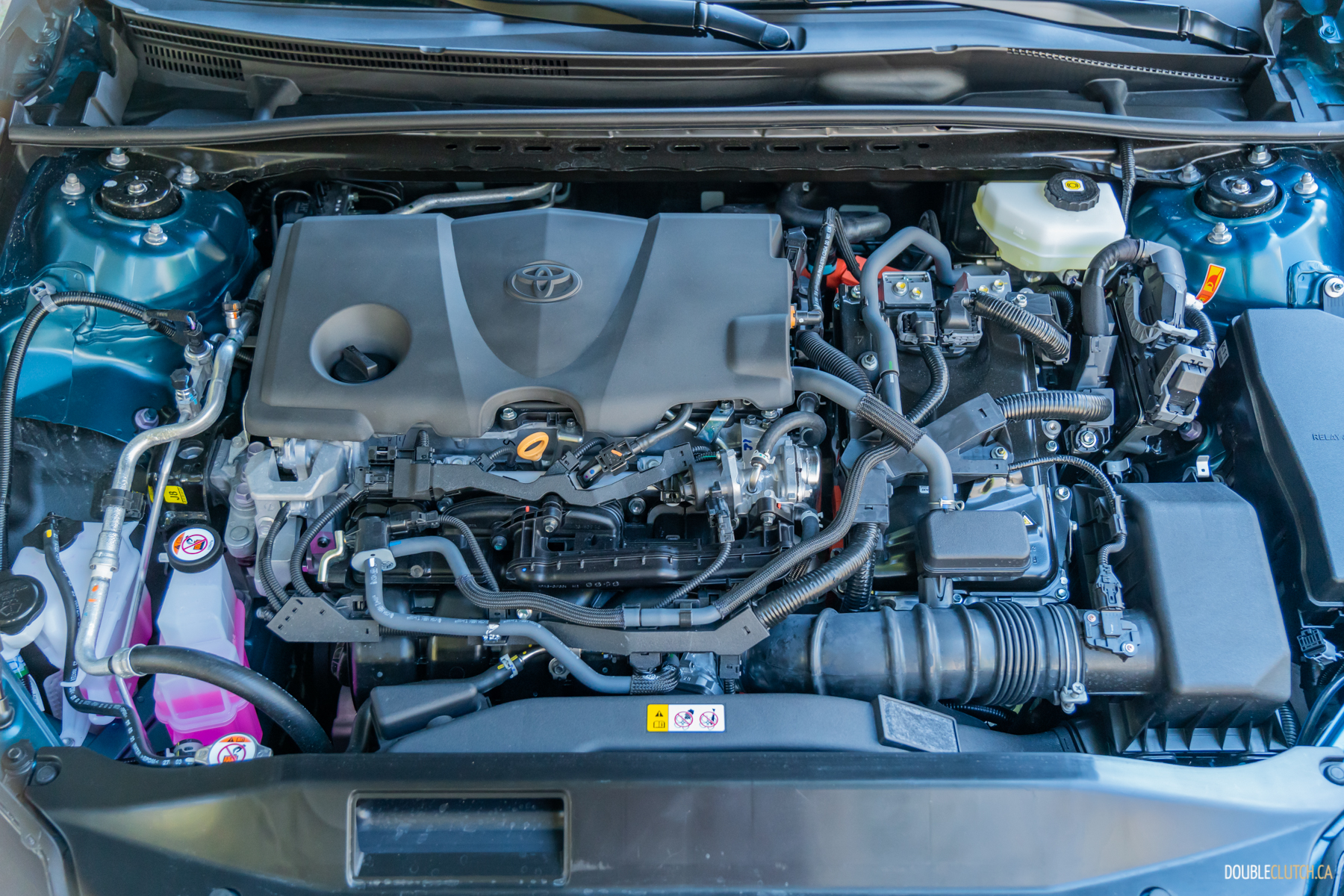
The Camry keeps borrowing from the Prius in its powertrain options, too. As of 2025, it’s hybrid only. A normally aspirated 2.5-litre four-cylinder engine is mated to a CVT, routing power to the front wheels with the help of a pair of small electric motors. Combined output is 225 horsepower on front-drive cars, and 232 hp on all-wheel-drive models, owing to the additional electric motor driving the rear wheels. This creates a slick on-demand AWD system without any of the mechanical complexity.
Not only does it work to improve traction on slippery surfaces, but it also assists acceleration and even makes cornering feel better, by cleverly diverting power to the outside wheel under hard cornering to improve the Camry’s sense of balance. Chassis and driver inputs through the steering wheel and brake pedal have also been reworked to feel more direct and communicative, leading to more confident operation for the default-car crowd — and more engagement for those that care. This is comfortably among the best driving Camrys ever, up there with the spectacularly over-engineered, Radwood-era generations.
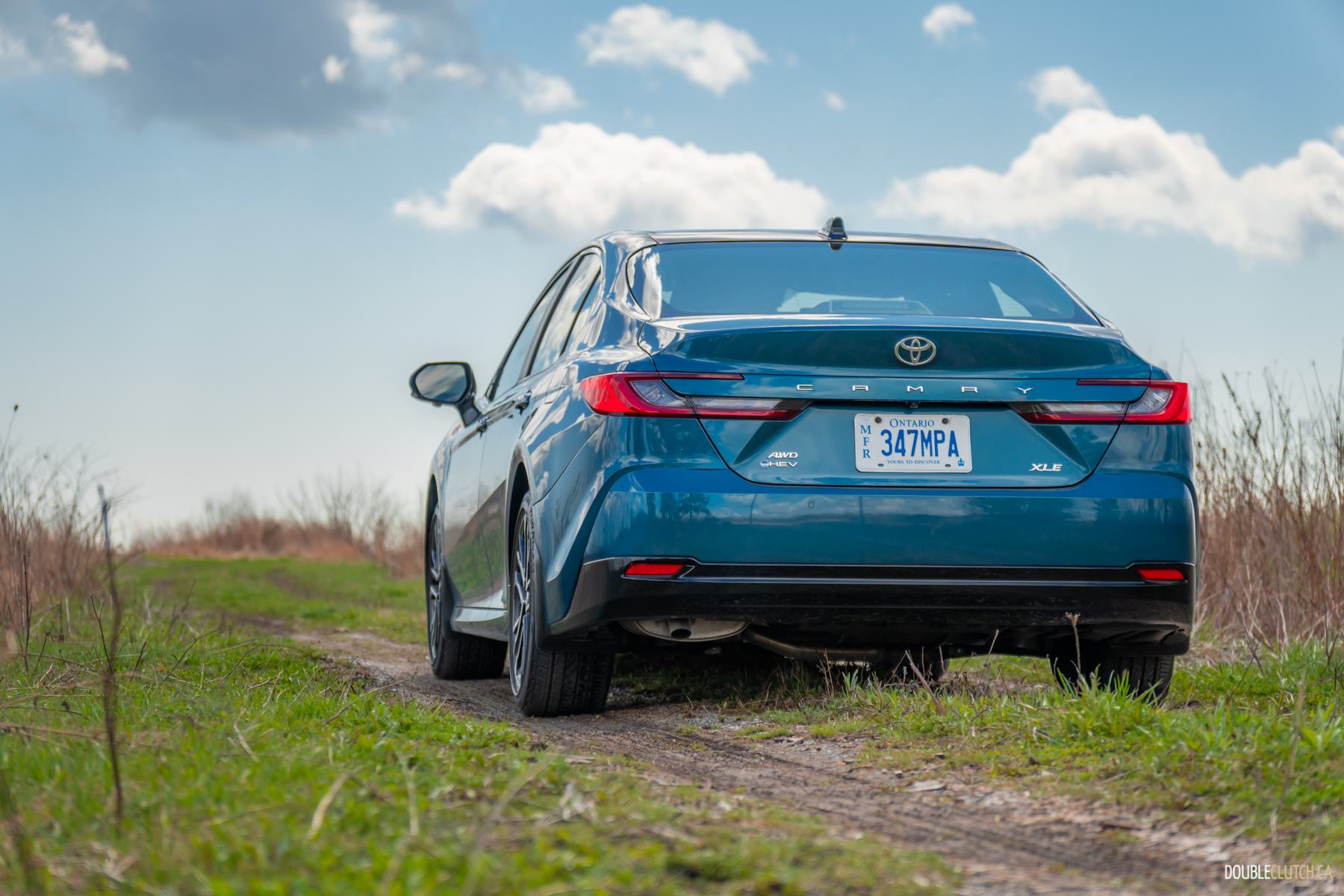
Toyota claims this latest Camry is capable of an average fuel use of 5.3 L/100 kilometres. My afternoon with it echoed this — honestly, it was doing better than that before I tried exploring the limits of its updated chassis and powertrain. It’s a huge boon for Toyota that all Camrys now fall into the category of being ridiculously efficient like the Prius, and it’s the strongest example yet of Toyota’s strategy to bring hybridization to everyone rather than locking it behind a costly top-tier trim. I’m usually the first to bemoan the onslaught of fake SUVs displacing sedans, and the Camry’s efficiency will only serve to help my case.
It’s not like you’re giving up any practicality, either. The Camry is a large car with a very well-thought-out cabin, the huge trunk gives it about as much usable cargo space as any compact or midsize SUV, and it offers excellent headroom and legroom all around. The outgoing Camry was one of Toyota’s last, um, legacy products, and its interior has finally been the beneficiary of an update to bring it in line with the likes of the outstanding new Honda Accord. A 12.3-inch touchscreen on upper trim levels is perched atop a new dashboard design, with more basic models receiving a seven-inch unit; both are powered by Toyota’s latest infotainment system, which took Toyota from among the worst to among the best when it launched last year. The power-adjustable, heated, and ventillated seats in the XLE model are trimmed in soft leather, and the dashboard and doors are dressed up in quilted microsuede. It’s a nice, distinct touch.
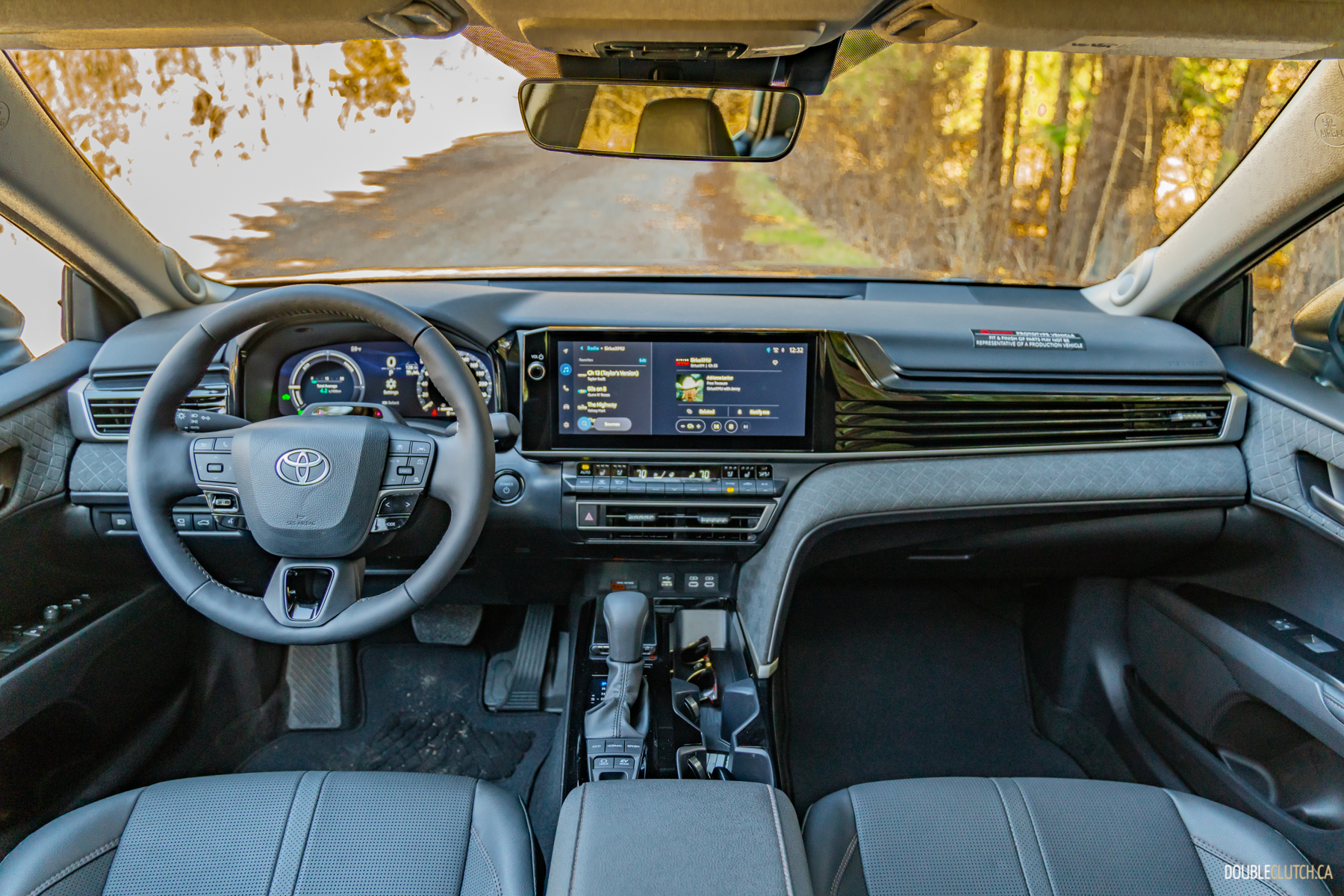
Toyota has been very careful to update the rest of the space without alienating existing customers — or people who simply like good, pragmatic design. The centre console gets a wireless charging pad and a neat little storage tray alongside it. Gear selection is handled by a chunky lever, and drive modes are chosen by large, clearly marked, matte-finish buttons. Climate controls are handled by metallic toggle switches, and volume and temperature are controlled by knobs. It may be all-new, but it’s instantly familiar and easy to understand.
It should be easy to drive for extended periods, too. The Camry displays smooth, composed ride quality even over battered roads. Toyota’s entire roster of driver assists and safety features are on duty here, with full-speed adaptive cruise control and lane tracing assistance standard on all trims, and Toyota’s hands-free Traffic Jam Assist coming on higher trim levels. It’s a quiet place to spend time, with only a nine-speaker JBL sound system to fill the void left by the acoustically laminated glass on the XLE.
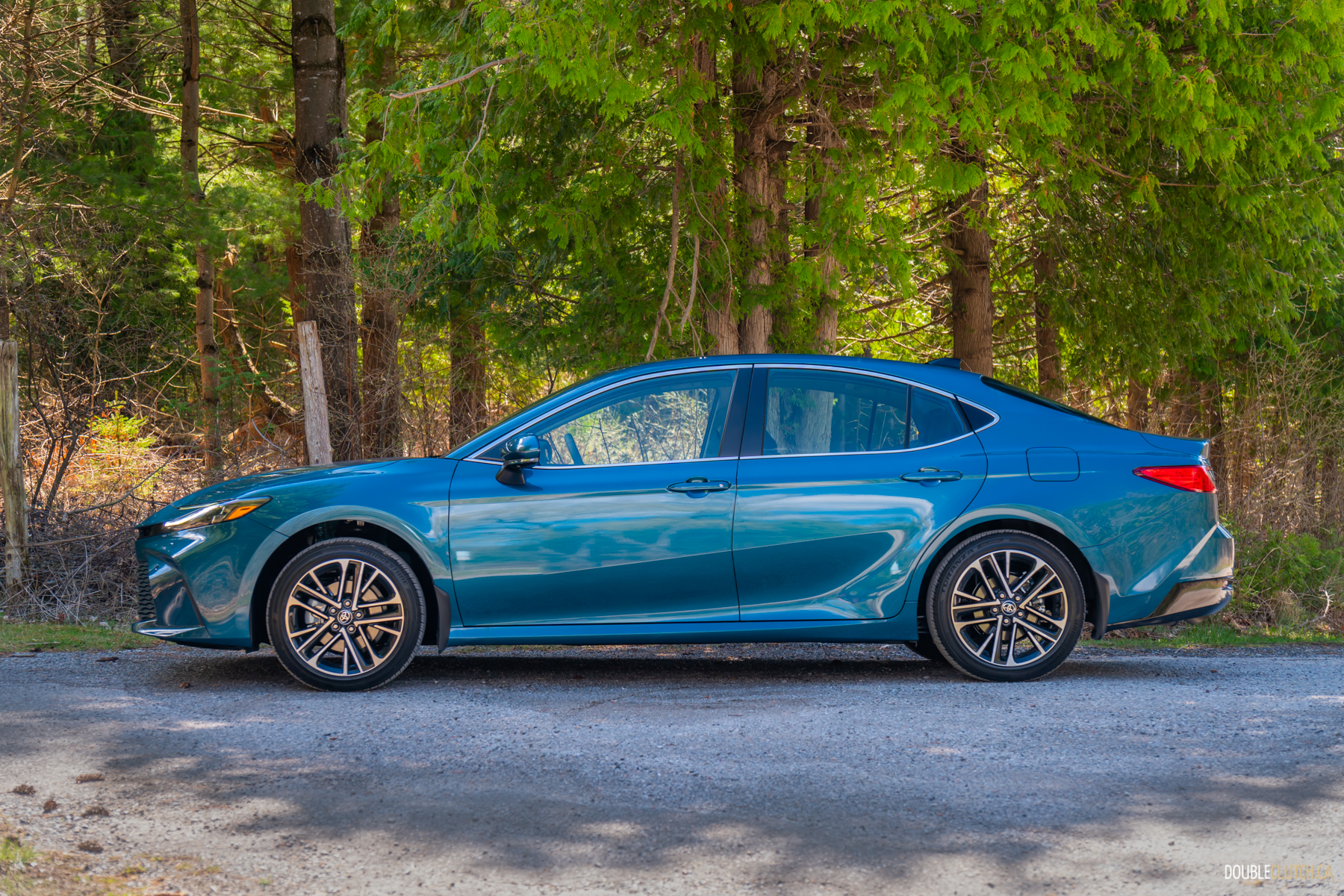
When you look at it through that lens, it’s a homerun. The ninth-generation Camry looks great, drives well, is efficient, and on a now semi-proven powertrain. The interior is meaningfully updated without going too far, and it’s safer, more useful, and practical as ever. And dare I say, in this era of everything being an amorphous white fridge-crossover-blob thing with stupid body armour, the Camry looks kind of badass. Like the Prius, it’s become sporty by sheer virtue of the fact that it’s not an SUV without losing sight of what made it a winner for decades.
I’m willing to wager a lot of people will be spending time in the 2025 Toyota Camry, just as they always have. It looks great, drives well, is remarkably efficient, roomy, comfortable, and meaningfully updated through-and-through without going too far. It’s a compelling SUV-alternative without losing sight of what made it a winner for decades — still doing the vehicular equivalent of make toast, but with a little more intrigue than you might expect. Pricing ranges from $34,300 up to $44,950, and deliveries should begin this spring.

